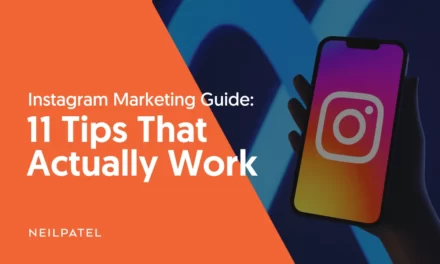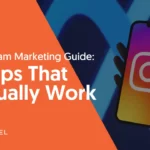
How to Blackhat SEO Techniques?

White hat SEO is a tactic that violates search engine policies and is used to raise a site’s position in search results. These dishonest methods don’t provide a solution for the searcher and frequently result in a penalty from search engines. Keyword stuffing, cloaking, and the use of secret link networks are examples of black hat tactics.
Keyword Stuffing
The technique of cramming your content with unrelated keywords in an effort to control where the page appears on search results pages is known as keyword stuffing. When keywords are added in several variations even when they don’t bring any value, users are negatively affected. Additionally, it can make your page rank for unrelated inquiries.
telephone directory lists with little extra value.
Text blocks listing the states and localities that a website is attempting to rank for
use the same words or phrases so frequently that it becomes jarring.
For a website providing outbound marketing tools, consider the following instance of keyword stuffing:
“We sell outbound marketing software as our line of work. We supply outbound marketing software. Get in contact with one of our outbound marketing software advisors if you’re considering purchasing outbound marketing software.
You’ll probably agree that it repeats itself a lot. It’s quite obvious, and Google can determine that the material doesn’t sound genuine.
You’ve probably heard the joke about the SEO copywriter who enters a bar or pub and orders beer, wine, or liquor from the Irish bartender. This joke, which addresses keyword stuffing, is another another excellent illustration of the technique. Although the words are all similar to one another, they are useless because they can’t even be used to link together a phrase.
To figure out what people are searching for, you may conduct keyword research, however it’s not a good idea to overuse these terms in your content. Focus on producing helpful content rather than stuffing it with pointless keywords.

Cloaking
When using cloaking, consumers see one piece of information, while search engines see another. In order to rank for a number of phrases unrelated to their content, websites using black hat SEO will do this. In an effort to prevent a search engine bot from discovering the spam material they are serving to visitors, spam websites frequently take this step.
It’s permissible to modify your material to appeal to various user groups. For instance, you may make your website’s size smaller for visitors using mobile devices. A page’s language can also be altered according to the nation from where a visitor hails. To pay for their content, publishers like Forbes or Inc. may alter the adverts that show up on a page. These are all very acceptable examples. if you are not only altering the information that is visible to search engine crawlers.
The best advise I can provide is to ask yourself whether what you want to do would solve for the user. There is no hard and fast rule to decide what is acceptable and what is not. It is acceptable if it does. You ought to handle web crawlers from search engines the same way you would any other user.
Use the fetch as Google tool to compare what people see to how Google perceives your website if you’re wondering.
Sneaky Redirects
When someone is redirected, they are taken to a different URL from the one they originally clicked. Redirects are used by black hat SEO techniques outside of their intended context. Similar to cloaking, this can entail sending a search engine crawler to one page while sending all other users to a different one.
Another example is to redirect a website with a lot of backlinks and high authority onto a page that is completely unrelated only to improve its ranking in search results. The bulk of authority is transferred from one page to another via a 301 redirect. This implies that someone using black hat SEO may employ redirection for nothing more than to rig search engine rankings.
Only utilise redirects for the purpose for which they were intended. This might happen if you switch the domain name of your website or combine two pieces of information. It’s also allowed to sometimes reroute users using JavaScript. Consider the case of LinkedIn, which when you are logged in directs you to a user’s entire profile rather than the user’s public profile when you are logged out. Conversely, covert redirection ought to be avoided. They transgress the policies of search engines like Google.

Poor Quality Content
Another widespread tactic in black hat SEO is the use of low-quality content that is useless to searchers. This comprises material that has been manually or artificially scraped from another website. Search engines like Google used to struggle to identify information that was plagiarised from other websites. This problem was fixed by the 2011 Google Panda update. The search rankings of several websites containing duplicate material were immediately lowered. Since then, Google has significantly improved its ability to detect duplicate and poor-quality information.
Using hidden keywords in your material is also against the rules. Some websites that use black hat SEO do this by having text that matches the background colour of the page. As a consequence, even if the website doesn’t include any content directly related to those invisible keywords, it can nonetheless show up in search results for those terms. Because the keywords are hidden, when a person clicks on the result in the mistaken belief that it would be about the subject they looked for, they don’t see any of the material they were searching for. There shouldn’t be a need to hide anything on your website if you’re providing a solution for the user.
An further unethical technique for tricking search engines is the “bait and switch.” This entails producing material on a subject you want to rank for. The content is changed once the page starts to appear in search results for this subject. Searchers are given a bad experience since the material they clicked through to view is no longer available. These SEO techniques are bad because they deceive both people and search engines.
White hat SEO includes the creation of unique, high-quality content as a key component. In addition to being necessary to prevent a penalty from search engines, it will help distinguish your website. High-quality content helps you establish trust with your target market and converts site visitors into paying clients.
Paid Links
The purchasing and sale of links is absolutely prohibited by search engines like Google. Any links “designed to manipulate PageRank or a site’s ranking in Google search results may be deemed part of a link scheme and a violation of Google’s Webmaster Guidelines,” according to their website. This involves providing free goods in return for referrals to a website. Former Google webspam team leader Matt Cutts advises consulting the FTC rules if you’re unsure of what constitutes a proper trade.
It’s best to refrain from bribing other websites to connect to your material. Google requests information from users on any instances of link buying or trading. Once the activity is identified, they promise to sanction both the buyer and the seller of links.
If you read this and you’ve bought links without realising it’s a black hat SEO technique, you should have them taken down as quickly as you can. If you are unable to convince webmasters to delete the links, you may also utilise the disavow links tool. This instructs Google not to take the purchased links into account when determining your Pagerank.
Abusing Structured Data/Rich Snippets
Other names for structured data are rich snippets and schema. You may modify how your material appears on search engine results pages thanks to this feature. It provides you additional space on results pages and helps your content stand out from that of rivals. A page showing, among other things, a podcast, a recipe, or a book can have structured data added to it. Probably one of the most well-liked forms of structured data is reviews schema markup.
Giving false information in structured data to trick consumers and search engines is known as black hat SEO. To make yourself stand out on search results pages, a person using blackhat SEO can give himself five stars on a fictitious review website and include structured data. Because search engines like Google encourage people to report websites that abuse structured data, this is an extremely hazardous strategy.Giving false information in structured data to trick consumers and search engines is known as black hat SEO. To make yourself stand out on search results pages, a person using blackhat SEO can give himself five stars on a fictitious review website and include structured data. Because search engines like Google encourage people to report websites that abuse structured data, this is an extremely hazardous strategy.
Blog Comment Spam
This black hat method, as the name implies, is posting a link to your website in blog comments. As search engines like Google altered their algorithms to devalue any links in blog comments, this tactic is less common today. Nowadays, links in blog comments are nofollow by default on the majority of reliable blogs. This indicates that neither the link nor its authority is followed by search engines like Google.
There are still many people on Fiverr offering their blog commenting services, despite the fact that the number of people engaged in the activity has decreased. Commenting on blogs with links to your website is a spammy approach to obtain links to your website, thus we strongly advise against it.
If you own a website, forum, or community that accepts comments, you should take precautions to make sure that neither humans nor bots can spam your comments area. Search engines like Google will degrade or eliminate entirely from the search results any pages that include spam. One strategy to reduce the danger of spam user produced material is to employ anti-spam technologies, such as Google’s free captcha tool.

































Recent Comments